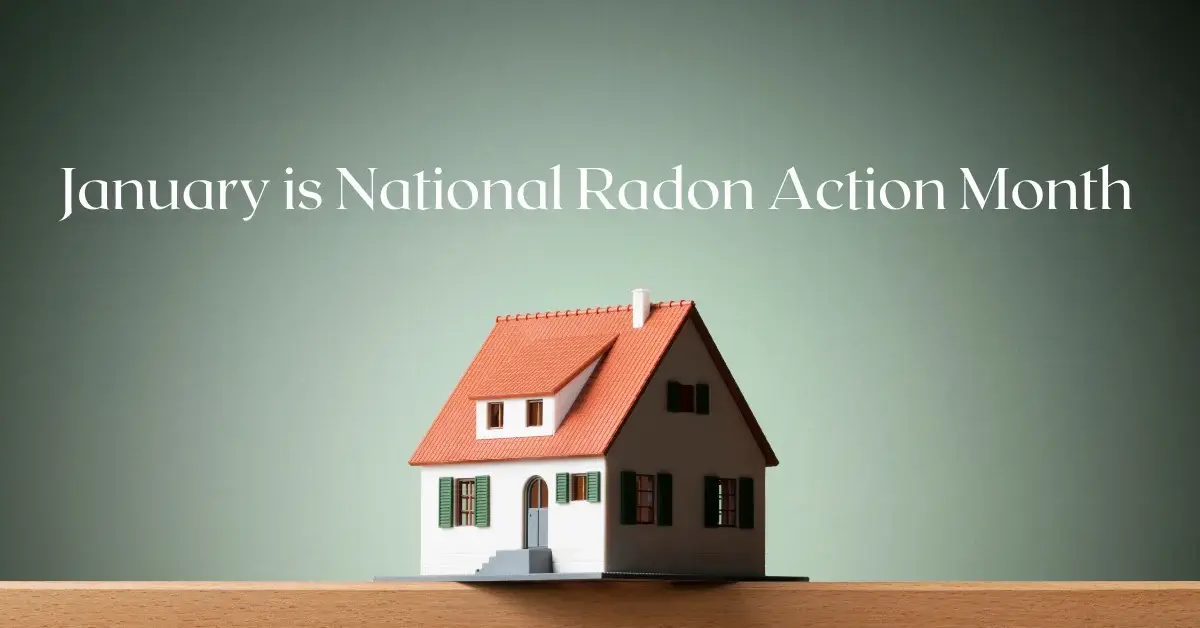Your Cart is Empty
🔥 Free shipping for orders over $50

What You Need to Know About National Radon Action Month
Are you aware that January is National Radon Action Month? This is a month to raise awareness about the dangers posed by radon gas. Radon is a naturally occurring gas that is odorless and colorless. It is formed from the breakdown of uranium in soil, rocks, and water. The gas seeps from the ground and can enter your home through cracks and gaps in the foundation, walls, and floors. It can be harmful to your health and is the second leading cause of lung cancer in the United States. In this blog post, we will explore what you need to know about radon and how to protect your family.
What is Radon?
Radon is a radioactive gas that is formed from the breakdown of uranium in the ground. It can seep through cracks and gaps in the foundation of buildings and accumulate inside. Radon is odorless and colorless, making it difficult to detect without proper testing. Long-term exposure to high levels of radon can increase your risk of lung cancer.
Why is Radon Dangerous?
Radon is considered dangerous because it is radioactive and emits alpha particles that can damage lung tissue. When you breathe in radon, the radioactive particles can stick to the lining of your lungs, increasing your risk of lung cancer. The risk of developing lung cancer from exposure to radon depends on several factors, including the level of radon in your home, the amount of time you spend in your home, and whether or not you smoke.
How to Test for Radon?
The only way to know if your home has elevated levels of radon is to do a radon test. Radon testing is a simple process that can be done by purchasing a DIY test kit or by hiring a professional radon testing service. DIY test kits are widely available and can be purchased at most home improvement stores. These kits usually require you to place a small detector in your home for a few days or weeks and then send it to a lab for analysis.
How do you mitigate Radon Levels in your home?
If your home has elevated radon levels, there are several ways to mitigate the problem. One of the most effective ways is to install a radon mitigation system. A radon mitigation system is a system of piping and fans that draws radon gas from beneath your home's foundation and exhausts it outside. Other ways to mitigate radon levels include sealing cracks and gaps in the foundation, improving home ventilation, and increasing air circulation.
What Can You Do During National Radon Action Month?
During National Radon Action Month, there are several things you can do to protect your family from the dangers of radon. First, test your home for radon. If the test shows elevated radon levels, take steps to mitigate the problem. Second, educate yourself and others about the dangers of radon. Share information about radon with your friends and family, and encourage them to test their homes. Third, support organizations that work to raise awareness about radon and promote radon testing and mitigation.
National Radon Action Month is an opportunity to raise awareness about the dangers of radon and take steps to protect your family from this hazardous gas. Remember that radon testing is a simple and affordable process that anyone can do. If you discover that your home has elevated radon levels, take action to mitigate the problem. By taking these steps, you can reduce your family's risk of lung cancer and ensure that your home is a healthy and safe place to live. If you are looking for additional actions you can take to combat and prevent the impact of radon on your health, click here!
| Item | Price | Qty | Total | |
|---|---|---|---|---|
| Subtotal | $0.00 | |||
| Shipping | ||||
| Total | ||||